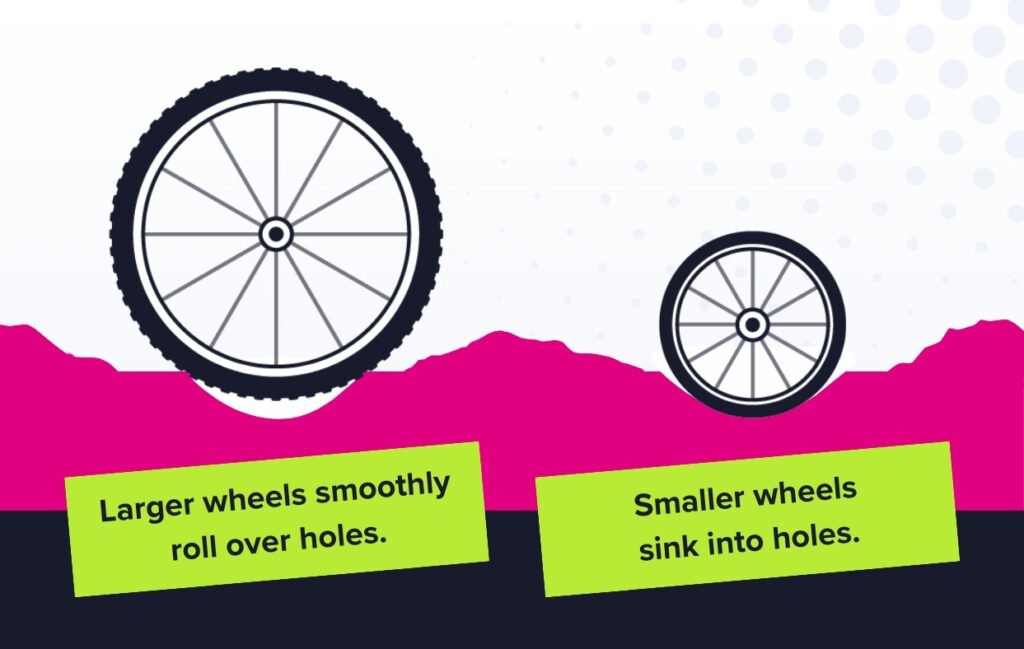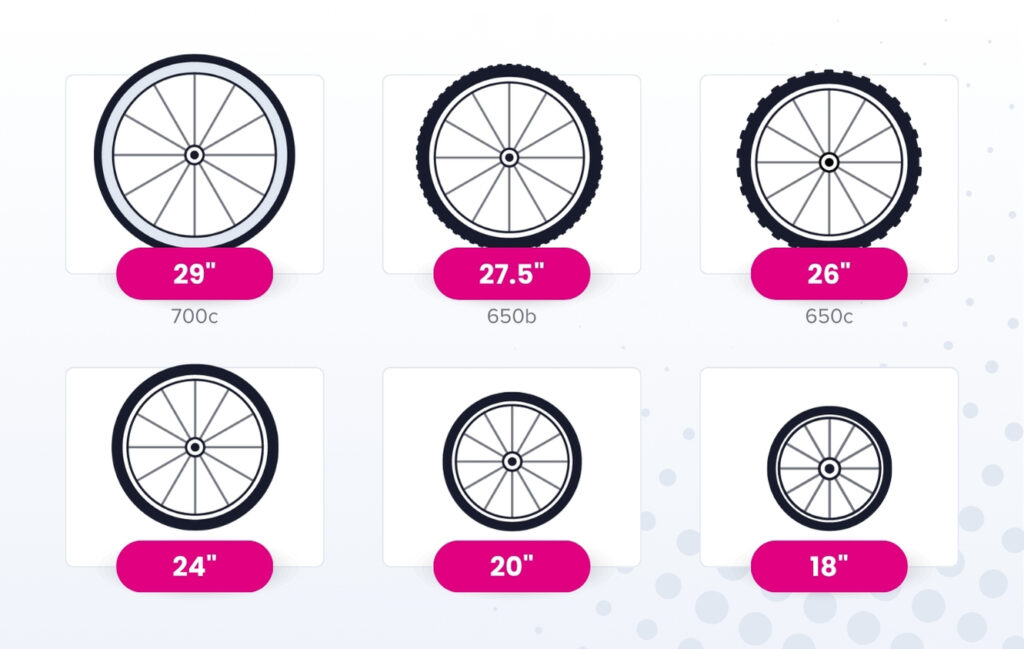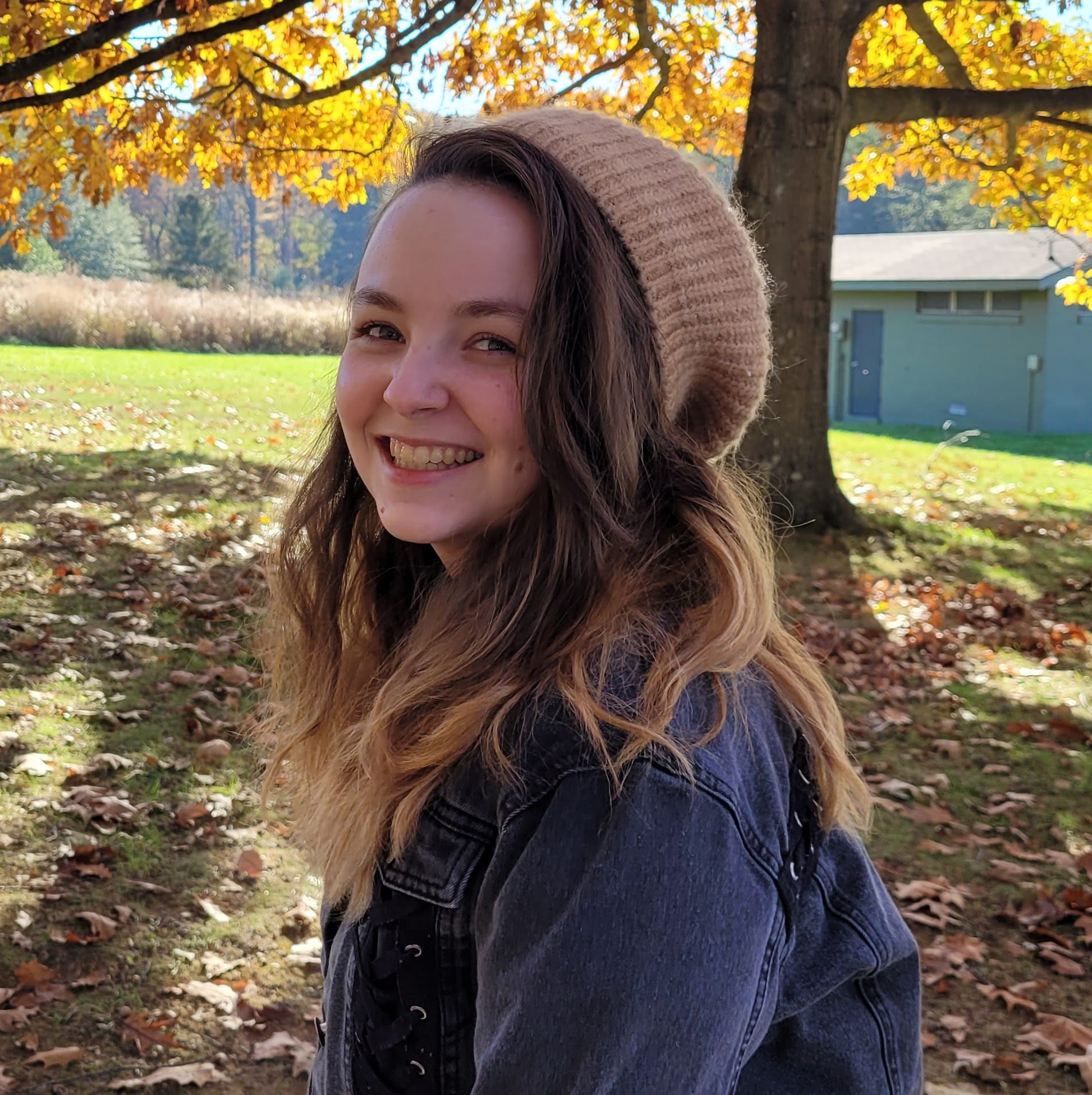Shopping for an e-bike often involves a learning curve as you explore new concepts like pedal assist systems and battery care. On top of all this new information, each e-bike comes with a long list of specifications — including wheel size — that you might be tempted to just gloss over or ignore.
But does wheel size really matter on an e-bike? Or are those specs just for hard-core riders?
Well, let’s find out!
Does Wheel Size Actually Matter?
Yes, wheel size matters on electric bikes, whether you’re considering a beach cruiser or eMTB. Not only does the size range help accommodate rider height, but it ultimately affects riding performance and comfort.
Wheel Size and Riding Performance
Wheel size impacts the feel of your ride, from acceleration to smoothness. Large wheels generally perform better on rough terrain but require more force to rotate, while small wheels struggle over bumps and holes but accelerate quickly.
Let’s break it down a bit.
Large Wheels
Large wheels, of course, have a greater mass and a bigger circumference that covers more distance with each rotation. This means you’ll need to apply more force to complete a full rotation, resulting in a slower acceleration. However, the top speeds are higher.
An e-bike motor can help provide the extra force needed to get the bike rolling, but it’s something to keep in mind if you plan to ride without the pedal assist (or if the battery dies).
Greater wheel diameter and circumference also perform better on rough terrain. Large wheels roll easily over holes and rocks with less concern about getting stuck. However, the larger rims typically complicate maneuverability in tight spaces.

Small Wheels
Thanks to their short diameter (and circumference), smaller wheels don’t travel that far with each rotation. While this may seem negative, it actually facilitates acceleration because the rider only needs to exert minimal force for a full rotation. However, that same small circumference limits their top speed — although an e-bike motor can help remedy that.
What a motor can’t help with, though, is performance on rough terrain. Smaller wheels are likely to get stuck in holes and struggle over rocks and bumps.
While you can certainly take a small-wheel bike on trails, it likely won’t perform as well as its large-wheel counterpart. Small wheels do perform much better in tight places, though, thanks to their compact rims.

Wheel Size and Comfort
In addition to better off-road performance, a larger wheel can also provide extra comfort — and not just because you won’t end up stuck in a hole, although that is a plus.
Large Wheels
A larger diameter provides a more flexible wheel that can better absorb shocks and vibrations. It handles crevasses and rocks better, smoothing them out for a more comfortable ride.
Keep in mind that larger wheels offer a smoother experience for all riders, not just off-roaders. For example, city and suburban roads can be brutal, filled with gravel and broken pavement. That’s why larger wheels are becoming a common comfort feature on urban e-bikes.
Small Wheels
While large wheels are definitely better for comfort, we don’t want to completely discredit small wheels, especially since they are a hit for folding bikes and shorter riders.
Small wheels may have less flexibility and absorption capabilities, but many e-bike companies pair them with fat tires that compensate for those limitations. These wide tires roll over bumps and uneven terrain with ease, smoothing out most trails and roads.
Understanding Wheel Sizes
With the importance of wheel size established, let’s clarify what exactly ‘small’ and ‘large’ wheels mean. Just like traditional bike wheels, e-bike wheels vary significantly in size, ranging from mini 5.5” wheels up to 36” giants. However, the standard sizes usually fall between 12” and 29”.

Small Wheels
Small e-bike wheels include anything under 26” in diameter and often appear on kids’ bikes, smaller frame sizes, and folding bikes. They help keep the e-bike as compact and lightweight as possible while often accommodating shorter riders with a lower stand-over height.
Wheels for kids’ bikes begin at 5.5” but more commonly come in 12” sizes. Folding e-bikes generally sport 20” wheels, although some have extra compact 16” wheels.
Pros of Small Wheels
- Low Center of Gravity: E-bikes with small wheels tend to have a lower center of gravity, which makes them easier to handle at lower speeds and in small spaces.
- High Maneuverability: Smaller wheels also mean a shorter wheelbase, making the e-bike ideal for navigating heavy traffic and increasing maneuverability at lower speeds and tight spaces.
- Quick Start: A key benefit of smaller wheels is their faster acceleration due to lower mass and shorter circumference. This feature makes small wheels ideal for casual town riding with frequent stops and starts.
- Accommodation for Shorter Riders: An e-bike with a smaller wheel might be a natural choice for shorter riders or children. It typically offers a lower frame height that’s more comfortable for a smaller rider.
Cons of Small Wheels
- Limited Off-Road Capabilities: Small wheels aren’t ideal for trail riding, as they’re likely to drop into crevasses and struggle over rocks. The wheels also lack the stability and shock absorption to handle bumpy terrains. However, a fat tire on a small wheel can compensate for these shortcomings and make off-roading more accessible.
- Low Top Speed: Small wheels offer limited top speed potential, which is key to remember when riding without pedal assist or throttle boost.
Large Wheels
Large wheels measure 26” and up. While 26” wheels (also referred to as 650c) used to be the standard size, many newer e-bikes — including beach cruisers and road e-bikes come with 27.5” wheels (also known as 650b).
Larger 29” wheels (also referred to as 700c) typically appear on eMTBs for the best off-road performance. Tall riders can also use oversized bike frames that feature 32” and 36” wheels, although these are not yet that common.
The DirtySixer is one of the few e-bikes with wheels this large. It’s nearly as tall as a mini car and fits riders between 5’10” and 7’4”.
Pros of Large Wheels
- Off-Road Benefits: Large wheels can easily navigate rocks, unstable terrain, unexpected potholes, and large curbs.
- Smooth Riding: A larger wheel can offer a smooth ride, thanks to its increased flexibility that helps absorb bumps and vibrations.
- Higher Top Speeds: Larger wheels can cover a greater distance in less time. Despite lower acceleration, larger wheels offer riders higher top speeds without using pedal assist or throttle power.
- Accommodation for Taller Riders: Larger wheels often fit on medium to extra-large bike frames and accommodate taller riders.
Cons of Large Wheels
- Reduced Maneuverability: The e-bike needs a longer wheelbase, which can reduce maneuverability in tight spaces.
- Slower Acceleration: The increased mass and circumference of large wheels means it takes more time for them to build momentum, which results in less efficient acceleration (without a motor, of course).
Finding the Right Wheel Size
Considering those factors, it’s now time to find your perfect e-bike. Here are a few considerations regarding the wheel size.
Riding Style
Riding style and location are critical when choosing the right e-bike wheel size. First, ask yourself whether you want a more leisurely ride, a hard-core all-terrain experience, or something in between. Consider whether you need quick acceleration and acute maneuverability (small wheels) or better performance over bumpy terrain (large wheels).
Leisure riders might be content with a smaller 20” wheel, while most eMTB riders acknowledge that a 29-er offers better off-road performance. However, it’s not as cut and dry as it seems.
Large-wheel e-bikes aren’t just for off-roading, and small-wheel bikes are just for city cruises. For example, commuters and urban riders might also lean towards a large 27.5” wheel to smooth out rough city pavement. Likewise, campers might choose a small-wheel folding e-bike with fat tires because of the simple transportation features.
In other words, it comes down to your priorities and unique use case.
Rider Height
Your height is also an essential factor in selecting the right wheel size. Short riders might feel more comfortable on an e-bike with small wheels, while taller individuals may gravitate toward large-wheel e-bikes.
Smaller off-roaders could also consider 27.5” wheels, which offer a happy middle ground. These wheels provide the flexibility to handle challenging terrains while being agile and comfortable enough to have fun on the trails.
That said, wheel size isn’t everything; the frame design also plays a significant role here. Step-through e-bikes don’t have a top bar that aligns with the wheel size, so they can accommodate a wide range of rider heights — and sport either small or large wheels.
Choose Your Ideal Electric Bike Wheel Size
Choosing the right e-bike wheel size is very much a personal choice, and riders now have more options than ever. While wheel size affects performance and comfort, remember that it’s just one of many features to consider. Things like tire size, motor, and frame design affect performance, as well.
Keep in mind that you technically can change the wheel size on your e-bike, but that might affect other components like the brakes, motor, and frame. It would be best to schedule a test ride at a local e-bike vendor if you’re unsure about the right size for you.
Want more help finding the perfect e-bike? Check out our E-Bike Finder tool, and stay up-to-date with all the latest e-bike news by subscribing to our newsletter below.



